Isla Isabela is, like Isla Guadeloupe, basically just a
large lump of volcanic rock stuck out in the sea. We got the anchor down, had showers and
breakfast then slept until almost two in the afternoon.
The following day we went ashore, beaching the dinghy at the west end of the pangueros
beach. Isla Isabela is a major nesting site for seabirds and there are birds everywhere
here. On all the small trees, even right next to the pangueros village, there are frigate
birds nesting, often five or six nests to a single bush. The nestlings range from tiny
blobs of white fluff with enormous black beaks, to much larger juveniles whose pin
feathers are growing in. |
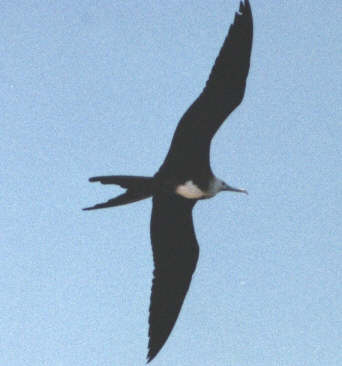 |
|
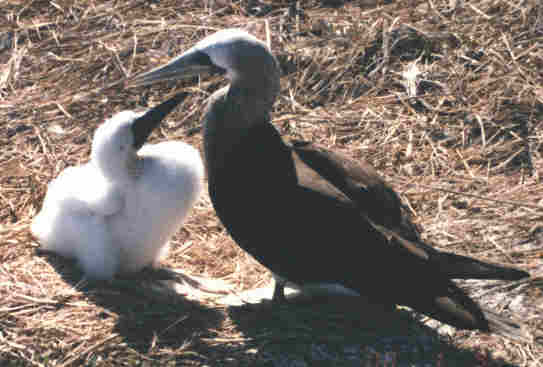 |
There are three varieties of boobies here
– blue footed, common brown and western brown boobies (the bird book says that male
brown boobies of the Western Mexico race have a pale head and we saw some which matched
this description), and possibly red footed boobies. The blue footed boobies have very blue
feet, no mistaking them.
Of course the whole island smells of bird guano, but the frigates and boobies are not
nearly as stinky as the pelicans. There are a lot of brown pelicans here but they did not
seem to be nesting at this time. There are also Heermann’s gulls, which we did not
recognize at first as their heads are white while the ones we saw in San Francisco had
dark heads. The red billed tropic birds, which screech like terns while flying, seem
to be nesting in the red cliffs around the anchorage. |
|
We left Isla Isabela after two days on our way to San Blas
and more bird watching. People come from all over North America to birdwatch here and the
shift from salt through brackish to fresh water of the San Blas estuary gives a great
variety. We went early in the morning in company with Jerry and Cathy from PO'
OINO. We set off while it was still cool and misty, heading off through a tunnel
of mangroves and almost immediately were stopping to ooh and ahh and take pictures of the
broad billed heron, very similar to a black crowned night heron but with a broad flat bill
and dusky rose chest. We saw several colonies of these birds, which are found only here in
San Blas.
Tiny grebes dove among the mangroves as we approached and we were yelled at by chestnut
chested herons. In the mangroves above our heads, termite nests were attached to the large
cross branches. Anhingas stood on the branches, holding their wings out to dry like
cormorants. |
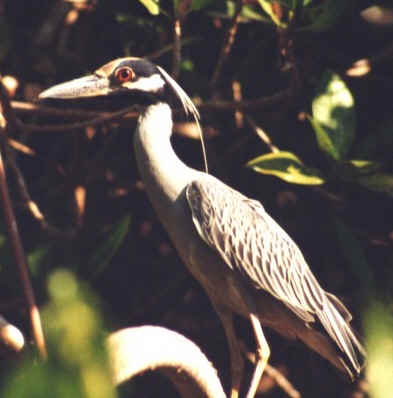 |
| The grasses gave way to small
trees and later to palms as we neared the crocodileria. Most of the crocodiles there were
either for breeding or had been reared with humans and therefore could not be released to
the wild. When the crocodiles lay eggs, the eggs are removed from the nest and placed in
an incubator where they are hatched. They are then kept until they are about two years old
and large enough to be able to survive the coati mundis and raccoons which prey on young
crocodiles. In the wild they can live to be two hundred years old although in captivity
they rarely exceed one hundred. |
Several crocodiles were lying around in the
sand with their mouths open showing that they have no tongue and we were told that they
lose heat through the mouth and this is a method of temperature regulation. They certainly
have nasty teeth – you can see how they overlap one another, making a crocodile bite
very dangerous and hard to escape. In the wild here, they mainly eat fish and crustaceans
plus the odd grebe or young heron. They do not grow to be much more than five or six feet
in length.
After we left the crocodileria, we were lucky enough to see a young wild crocodile,
sitting in a shallow pool of water at the edge of the channel plus lots of snapping
turtles out sunning themselves now that the mist had gone. |
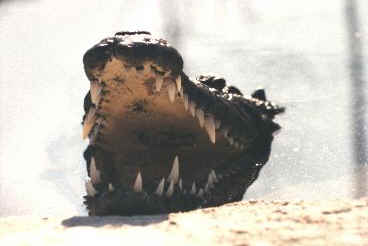 |
This was definitely a highlight of
our trip so far and our bird list for the trip include:
Anhinga, boat billed heron, great kiskadee (a flycatcher), snowy egret, an undetermined
owl, gray hawk, black vultures, common moorhen, some kind of rail, whip-poor-will or
nightjar, smooth billed anis, green kingfisher, ringed kingfisher. |
|
|
Another highlight along this coast was a side trip to
Tepic, the capital of Nayarit state which the guidebook describes it as a typcial Mexican
town, with very few tourists. It has lots of shops, including a large department stores
near the main plaza. The cathedral is quite nice with carved stone angels in the portico,
one of which has very local features.
The main market in Tepic is very large with excellent vegetables, lots of fresh fish and
several cheese counters. We tried a sample of smoked marlin and bought a chunk for 20
pesos as it was so good.
Lunch was delicious barbecued chicken and potatoes which we ate in the main plaza. Mexican
parks are very much for use and they are always well provided with benches to sit on. So
we sat and ate and watched the local people doing their Saturday shopping. |
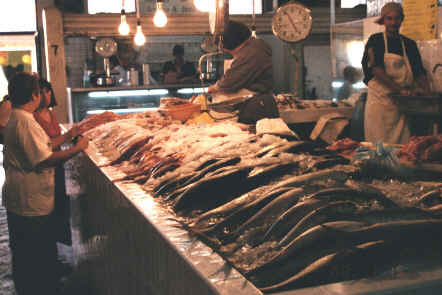 |
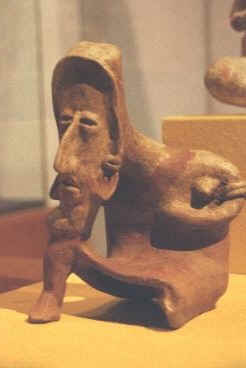 |
After lunch we visited the Regional Museum where we saw
fascinating pottery artifacts from the local inhabitants of about 2000 BCE. Most of the
statues were intended as tomb ornaments – many local tribes built burial caverns
beneath their houses accessed by a deep tunnel. The chambers would contain bowls and
statues for the use of the dead in the next world. Some of the statues were extremely
sophisticated in design and there were also maquettes of houses and groups of people
playing games. Several statues represented men playing musical instruments and also men
carrying weapons and wearing armour. There is a 1000 year old carved stone showing the
eagle clutching the snake in its talons, similar to that on the current Mexican flag. |
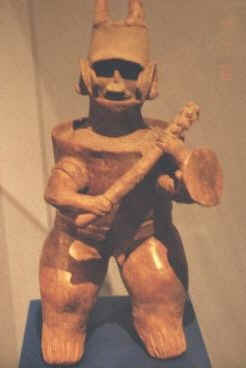 |
|
|
| We stayed in Paradise Village Marina while in
the Puerto Vallarta area. This was convenient and a good way to rechard ou batteries, with
a swimming pool and all resort amenities available to marine tenants. While here we have
not just been lazing round the pool. We hauled the boat out at Opequimar, the yard in
Puerto Vallarta, for an insurance survey, which went very well. We finally found an
replacement for the diesel pump on the engine which has been causing trouble ever since La
Paz. We also did a lot of food shopping and we bought samples of Mexican cans to try so we
know what we're buying when we do our Pacific provisioning. We bought some French Franc
travellers cheques at American Express which we figure means we are definitely intending
to go to French Polynesia this year (although we could always fly to Paris and spend them
there).We did have one day of sightseeing in town and were impressed by the replica of
Queen Carlotta's crown held up by angels which forms the top of the steeple of the Puerto
Vallarta cathedral, but overall our impression of Puerto Vallarta is one of lots of shops
and hotels in a warm, sunny climate. We found San Blas more interesting. On the other hand
one can find boat supplies more easily here and provisioning is very good with several
excellent supermarkets and a Sam's Club (similar to Costco). |
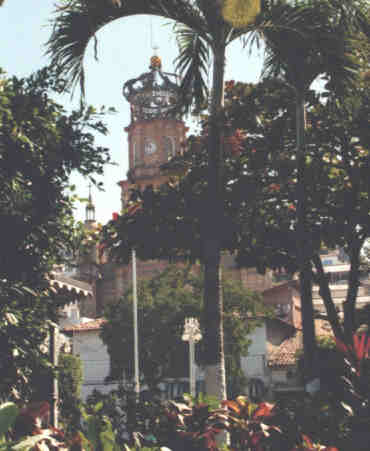
|
|







